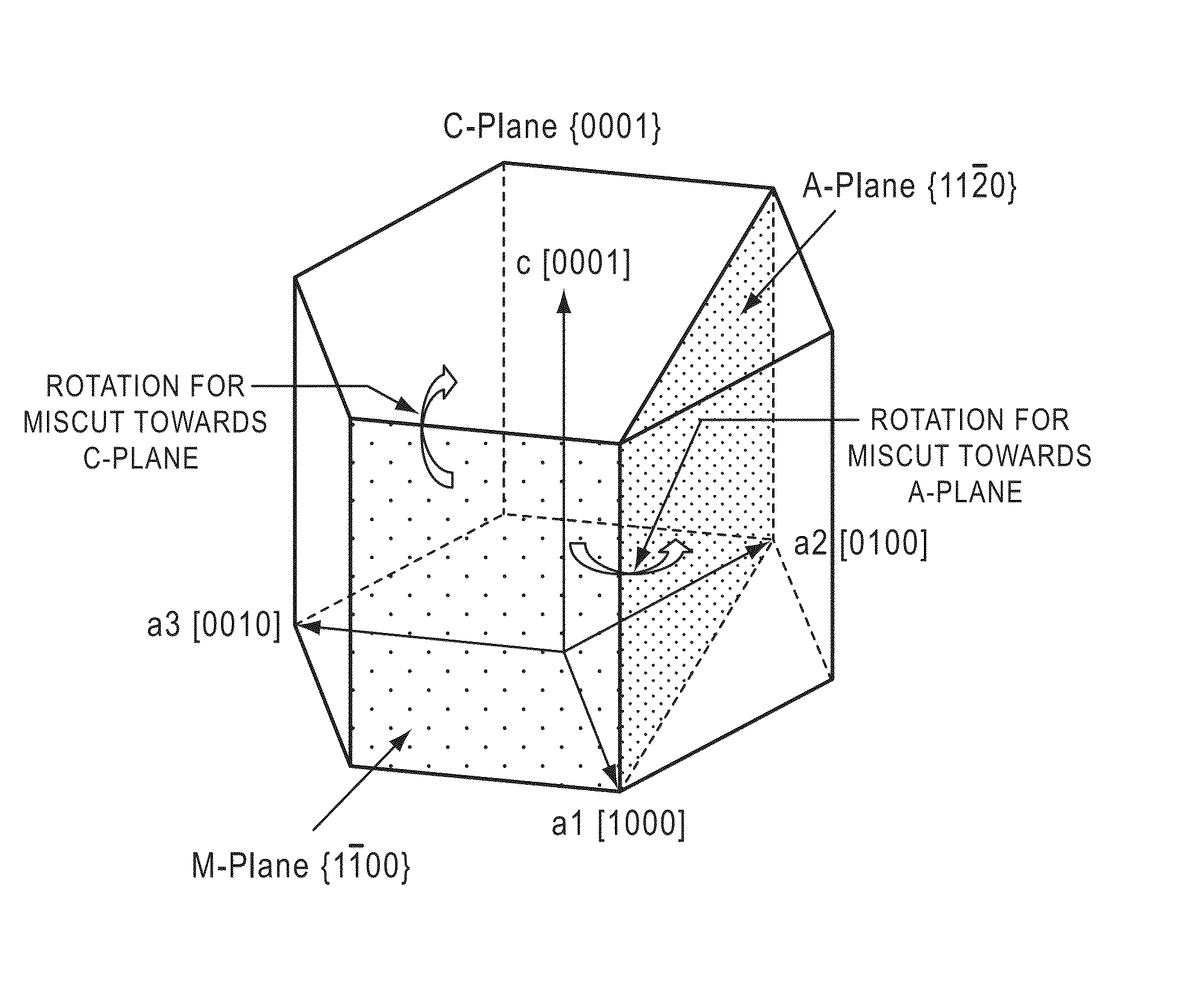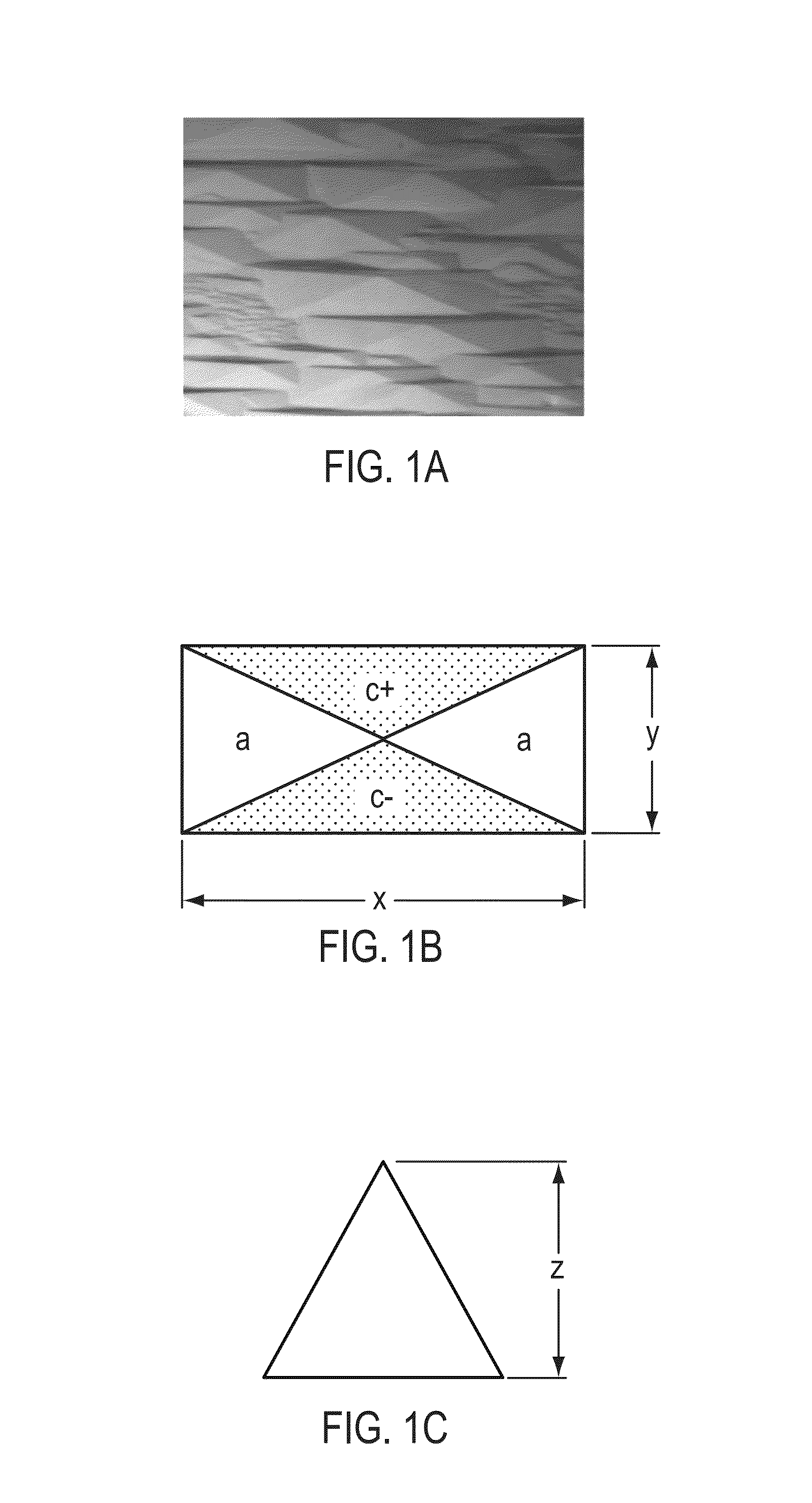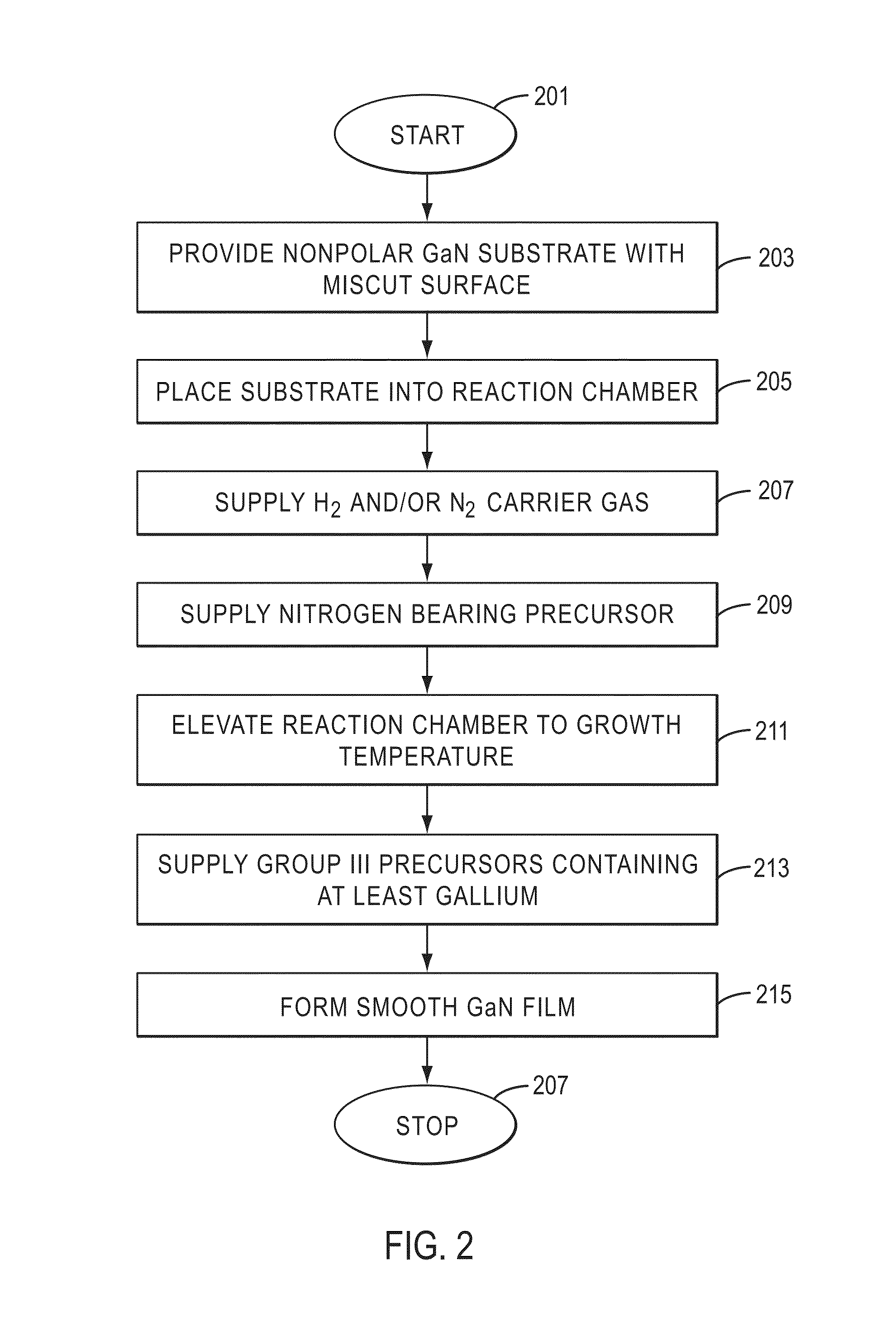Surface morphology of non-polar gallium nitride containing substrates
a gallium nitride and substrate technology, applied in the field of optical devices, can solve the problems of reliability, conventional edison light bulbs dissipate much thermal energy, drawbacks, etc., and achieve the effects of improving device performance, cost-effective manufacturing, and cost-effectiveness
- Summary
- Abstract
- Description
- Claims
- Application Information
AI Technical Summary
Benefits of technology
Problems solved by technology
Method used
Image
Examples
Embodiment Construction
[0041]According to the present invention, techniques related generally to optical devices are provided. More particularly, the present invention provides a method and device for fabricating crystalline films for emitting electromagnetic radiation using non-polar (10-10) gallium containing substrates such as GaN, MN, InN, InGaN, AlGaN, and AlInGaN, and others. Merely by way of example, the invention can be applied to optical devices, lasers, light emitting diodes, solar cells, photoelectrochemical water splitting and hydrogen generation, photodetectors, integrated circuits, and transistors, among other devices.
[0042]In one or more embodiments, the present invention is directed to generate high efficiency GaN-based light emitting devices operating at wavelengths beyond 400 nm for blue, green, yellow and red emission according to embodiments of the present invention. The proposed device will be used as an optical source for various commercial, industrial, or scientific applications. Th...
PUM
| Property | Measurement | Unit |
|---|---|---|
| thickness | aaaaa | aaaaa |
| atmospheric pressure | aaaaa | aaaaa |
| length | aaaaa | aaaaa |
Abstract
Description
Claims
Application Information
 Login to View More
Login to View More - R&D Engineer
- R&D Manager
- IP Professional
- Industry Leading Data Capabilities
- Powerful AI technology
- Patent DNA Extraction
Browse by: Latest US Patents, China's latest patents, Technical Efficacy Thesaurus, Application Domain, Technology Topic, Popular Technical Reports.
© 2024 PatSnap. All rights reserved.Legal|Privacy policy|Modern Slavery Act Transparency Statement|Sitemap|About US| Contact US: help@patsnap.com










